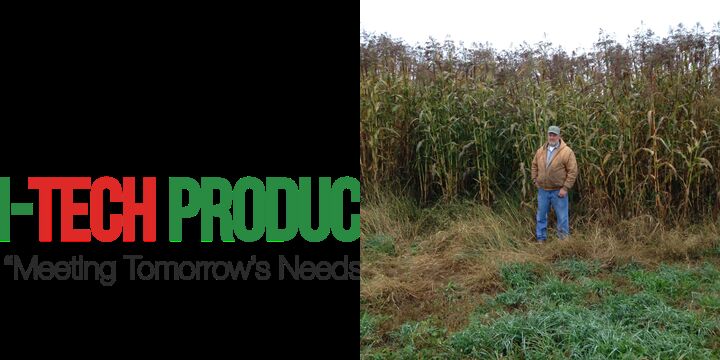Using VBF's for CO 2 Capture
The Problem
Using our patented Combined Remediation Biomass and Bio-Product Production (CRBBP) Process, we seek to reduce Global Warming by capturing CO 2 emitted by power plants, industrial facilities and other, large emitters, using our Vertical Bio-Crop Farms (VBF’s), in order to concentrate the amount of acreage, proximate to such emitters, in order to reduce the amount of CO 2 entering the atmosphere. In addition, we will capture CO 2 in open field plantings, as we remediate contaminated brownfield sites, and capture airborne particulate matter, in inner-city neighborhoods. Although the focus of this exercise is on designing and developing VBF’s, be they enclosed or in an open field, our bio-crops can also capture substantial amounts of airborne particulate matter, especially important these days, as communities impacted by this type of pollution, disproportionately suffer from asthma and other respiratory diseases and, therefore disproportionately suffer from COVID-19 illness to a higher and much more deadly extent. And, scientists now say such airborne particles may actually be carrying droplets containing COVID-19, great distances, thru the air, widely spreading the disease. For an example of such research, see: https://genomebiology.biomedcentral.com/articles/10.1186/s13059-020-01964-x. Lastly, we wish to convert the resulting biomass from our CRBBP Process into a variety of circular economy bio-products, which never end up as waste.
Our Proposal
The urgency of Global Warming calls for, over the next 10 years, or so, timely and cost-effective solutions to substantially reduce the levels of CO 2 in the atmosphere. Therefore, I propose an application of my patented CRBBP Process, by which we would grow special bio-crops, enclosed in several of our proposed Vertical Bio-Crop Farms (VBF's), adjacent to coal, gas or even biomass-fired power plants, and other large emitters, to capture CO 2 from their flue gasses, and otherwise reduce their adverse environmental impacts. As is commonly known, plants and trees absorb CO 2 and, thru photosynthesis, they convert CO 2 into plant and tree material, while emitting oxygen. And, according to an analysis done for us, by Daniel L. Sanchez, PhD, of the University of California-Berkeley, over a 15-year span, equivalent acreages of our preferred bio-crop (Biomass Sorghum) will, in an open f field, extract 14 tons of CO 2 per year, which is 3 times the CO 2 absorbed, by the same acreage of pine trees and 2 times the CO 2 extracted by the same acreage other crops, including other bio-crops, like switchgrass. However, if we were to enclose Biomass Sorghum in VBF’s, where we could control lighting and other key environmental factors, we could cause such an annual crop, which normally has a single, 6-month growing season, per year, to be planted twice a year, thereby, we estimate, more than doubling the total amount of CO 2 captured a year, to more than 30 tons per year.
We Assume that...
2. Biomass Sorghum can be grown in vertical farms.
3. Biomass Sorghum will grow bigger and faster in high CO 2 atmospheres.
4. Biomass Sorghum will respond well to LED lighting, rather than sunlight.
5. Rather than having 1, 6-month season a year, Biomass Sorghum can have 2 growing seasons, using LED lighting, thereby more than doubling its CO 2 capture, biomass and bio-product production level.
1. In VBF's Biomass Sorghum will extract 6 times the CO 2 as newly planted trees.
6. That there are additional, proprietry techniques which will increase Biomass Sorghum yield, lower cost and maximize space utilization.
Constraints to Overcome
We seek to overcome CO 2 capture’s cost barriers, and to overcome the limitations and the speed and the magnitude by which nature can capture large amounts of CO 2. We also want to capture as much CO 2 from large, point-source emitters, as possible, before their emissions are disbursed into the atmosphere. And, in order to be able to share the costs of growing our bio-crops across several tasks, the tasks must be important and of value, so the other constraint is how to develop several, revenue-generating CRBBP Process tasks and bio-products. Lastly, we need to design the VBF’s in such a way that we maximize their throughput and minimize the cost, to both build and operate them.
Current Work
Over the next 3-6 months, we need to: 1. Come up with efficient and cost-effective designs for our VBF's 2. We need to determine costs to build and operate VBF's 3. Qualify our VBF CO 2 Capture approach for federal tax credits and other incentives. 4. Collaborate with one or more demo project partners (Exelon, etc.). 5. Find and develop markets for bio-products
Current Needs
Resources, Collaboration & Technical Assistance: 1. Vertical farming expertise, coupled with new design creativity, to help design optimal VBF's 2. Adequate funding to build and conduct VBF Demo Project tests. 3. Collaborative partnering with our VBF emitter and bio-product customers.
